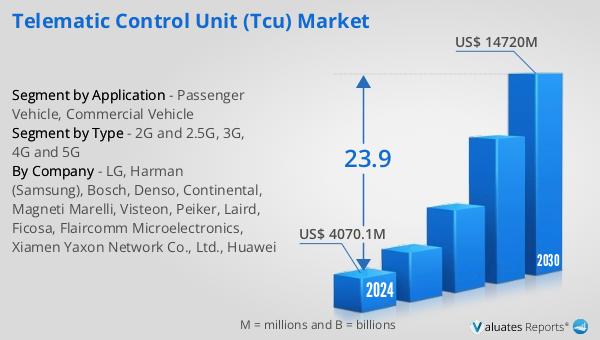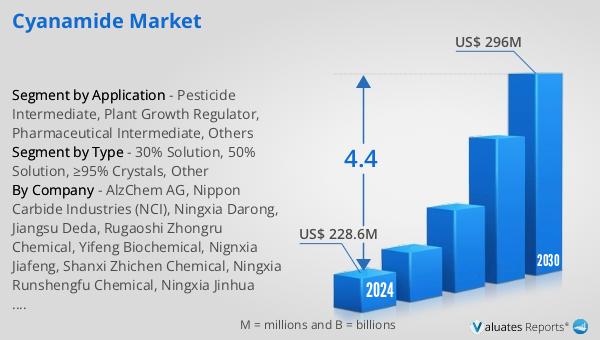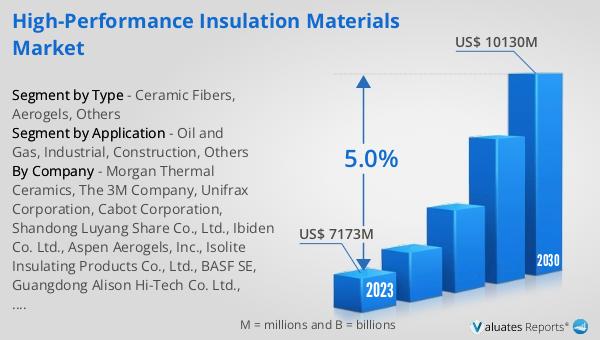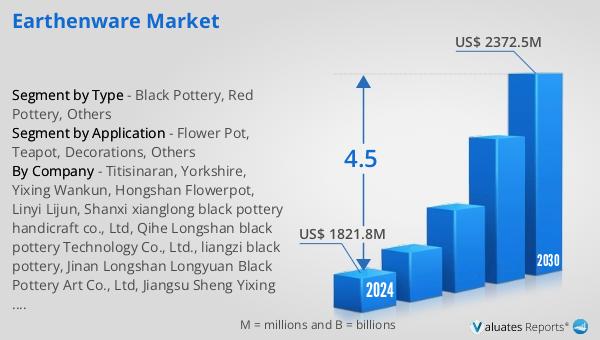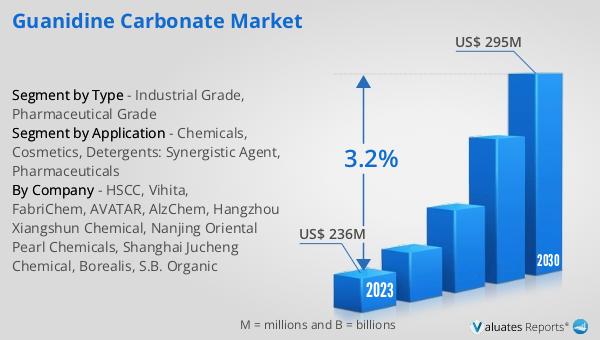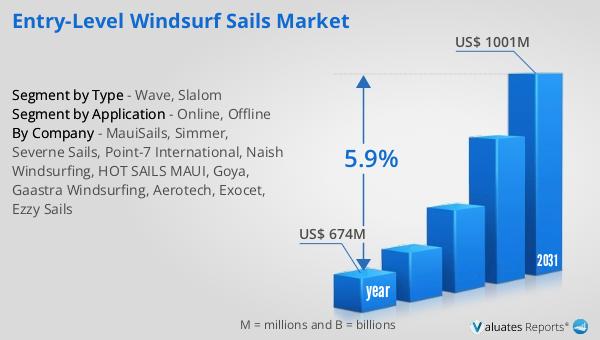What is Global Reed Switch Device Market?
The Global Reed Switch Device Market refers to the worldwide industry focused on the production, distribution, and utilization of reed switch devices. Reed switches are simple, magnetically operated electrical switches that are used in a variety of applications, including automotive, telecommunications, consumer electronics, and industrial automation. These devices consist of two ferromagnetic blades sealed within a glass tube, which come into contact when exposed to a magnetic field, thus completing an electrical circuit. The market for these devices is driven by their reliability, low power consumption, and ability to operate in harsh environments. As industries continue to automate and integrate more electronic components, the demand for reed switch devices is expected to grow. This market encompasses a wide range of products, from basic reed switches to more complex assemblies like reed relays and magnetic sensors, catering to diverse applications across different sectors. The global reach of this market indicates its significance in modern technology and industrial processes.
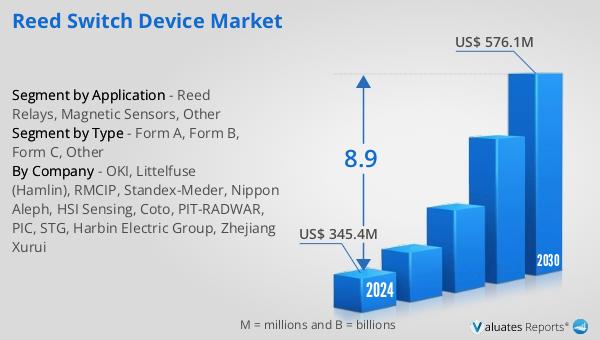
Form A, Form B, Form C, Other in the Global Reed Switch Device Market:
Form A, Form B, Form C, and other types of reed switch devices play crucial roles in the Global Reed Switch Device Market, each serving specific functions based on their unique configurations. Form A, also known as a single-pole, single-throw (SPST) normally open switch, is the most common type. It consists of two contacts that remain open until a magnetic field is applied, causing them to close and complete the circuit. This type is widely used in applications where a simple on-off switch is required, such as in security systems, door sensors, and various consumer electronics. Form B, or single-pole, single-throw (SPST) normally closed switch, operates in the opposite manner. The contacts remain closed, completing the circuit until a magnetic field is applied, which then opens the contacts and breaks the circuit. This type is less common but is essential in applications where the default state needs to be a closed circuit, such as in fail-safe systems and certain types of alarms. Form C, known as a single-pole, double-throw (SPDT) switch, is more complex. It has three contacts: one common, one normally open, and one normally closed. When a magnetic field is applied, the common contact switches from the normally closed contact to the normally open contact. This type is used in applications requiring a changeover switch, such as in telecommunications and some industrial controls. Other types of reed switches include Form D and Form E, which are variations of the basic forms with additional features like higher current handling capabilities or multiple switching points. These specialized forms are used in niche applications where standard forms may not suffice. The diversity in reed switch configurations allows for their use in a wide range of applications, making them versatile components in the global market. Each form has its own set of advantages and is chosen based on the specific requirements of the application, whether it be for simple on-off control, fail-safe operations, or complex switching mechanisms. The adaptability and reliability of these devices ensure their continued relevance in various technological and industrial fields.
Reed Relays, Magnetic Sensors, Other in the Global Reed Switch Device Market:
The usage of reed switch devices in the Global Reed Switch Device Market spans several key areas, including reed relays, magnetic sensors, and other specialized applications. Reed relays are one of the primary applications of reed switch devices. These relays use a reed switch as the contact mechanism, enclosed within a coil. When an electric current passes through the coil, it generates a magnetic field that activates the reed switch, allowing the relay to control high-voltage circuits with low-voltage signals. Reed relays are valued for their fast switching speeds, low contact resistance, and long operational life. They are commonly used in telecommunications, test and measurement equipment, and automated test systems, where precise and reliable switching is crucial. Magnetic sensors, another significant application, utilize reed switches to detect the presence or absence of a magnetic field. These sensors are used in various industries, including automotive, consumer electronics, and industrial automation. In automotive applications, magnetic sensors are employed in systems like anti-lock braking systems (ABS), seatbelt detection, and engine control units. In consumer electronics, they are used in devices such as smartphones and laptops for functions like screen rotation and lid closure detection. Industrial automation relies on magnetic sensors for position and proximity sensing, ensuring accurate and efficient operation of machinery and equipment. Other applications of reed switch devices include their use in security systems, medical devices, and household appliances. In security systems, reed switches are used in door and window sensors to detect unauthorized entry. Medical devices, such as pacemakers and hearing aids, utilize reed switches for their reliability and low power consumption. Household appliances, including washing machines and refrigerators, use reed switches for functions like door open/close detection and water level sensing. The versatility of reed switch devices makes them indispensable in a wide range of applications, contributing to the growth and development of the Global Reed Switch Device Market. Their ability to operate in harsh environments, combined with their low power consumption and high reliability, ensures their continued use in existing and emerging technologies.
Global Reed Switch Device Market Outlook:
The global Reed Switch Device market is anticipated to expand significantly, with projections indicating growth from US$ 345.4 million in 2024 to US$ 576.1 million by 2030, reflecting a Compound Annual Growth Rate (CAGR) of 8.9% during the forecast period. The market is dominated by the top four manufacturers, who collectively hold a share exceeding 60%. Among the various product types, Form A stands out as the largest segment, accounting for over 60% of the market share. This growth is driven by the increasing demand for reliable and efficient switching solutions across various industries, including automotive, telecommunications, consumer electronics, and industrial automation. The dominance of Form A reed switches highlights their widespread use and versatility in numerous applications, from simple on-off controls to more complex switching mechanisms. The significant market share held by the leading manufacturers underscores their influence and the competitive nature of the industry. As the market continues to evolve, the demand for innovative and high-performance reed switch devices is expected to drive further growth and development.
| Report Metric | Details |
| Report Name | Reed Switch Device Market |
| Accounted market size in 2024 | US$ 345.4 million |
| Forecasted market size in 2030 | US$ 576.1 million |
| CAGR | 8.9 |
| Base Year | 2024 |
| Forecasted years | 2024 - 2030 |
| Segment by Type |
|
| Segment by Application |
|
| Production by Region |
|
| Sales by Region |
|
| By Company | OKI, Littelfuse (Hamlin), RMCIP, Standex-Meder, Nippon Aleph, HSI Sensing, Coto, PIT-RADWAR, PIC, STG, Harbin Electric Group, Zhejiang Xurui |
| Forecast units | USD million in value |
| Report coverage | Revenue and volume forecast, company share, competitive landscape, growth factors and trends |
